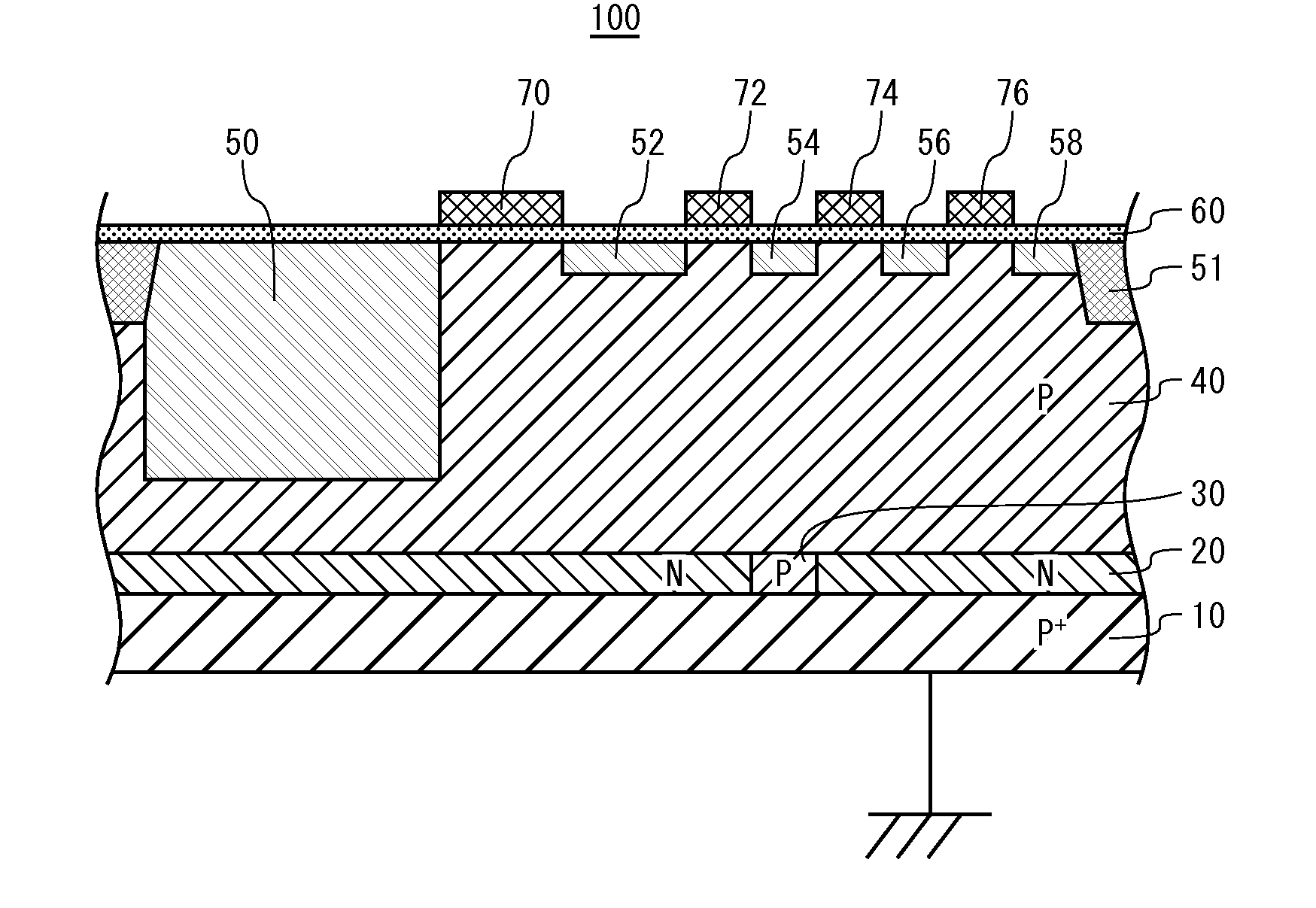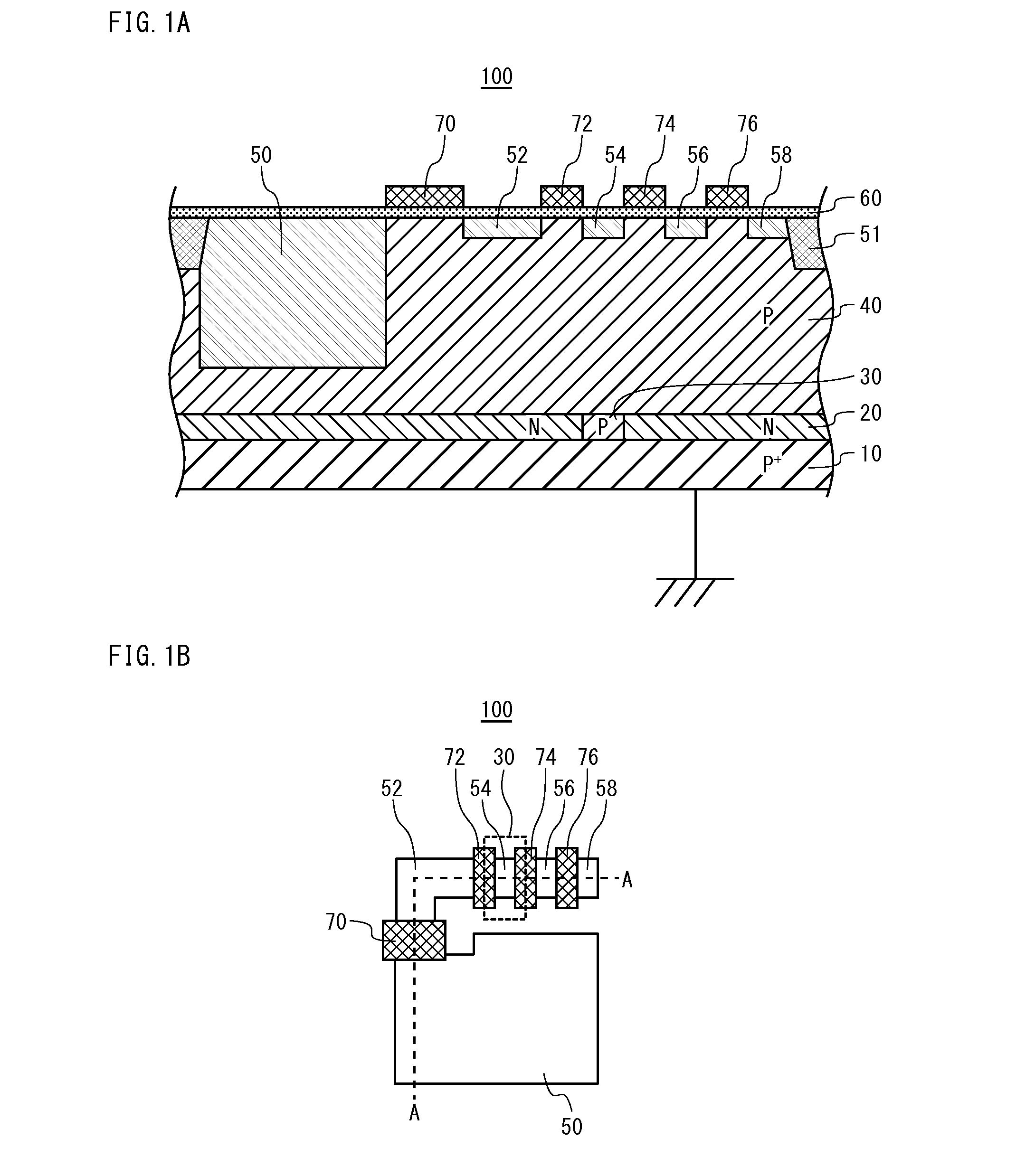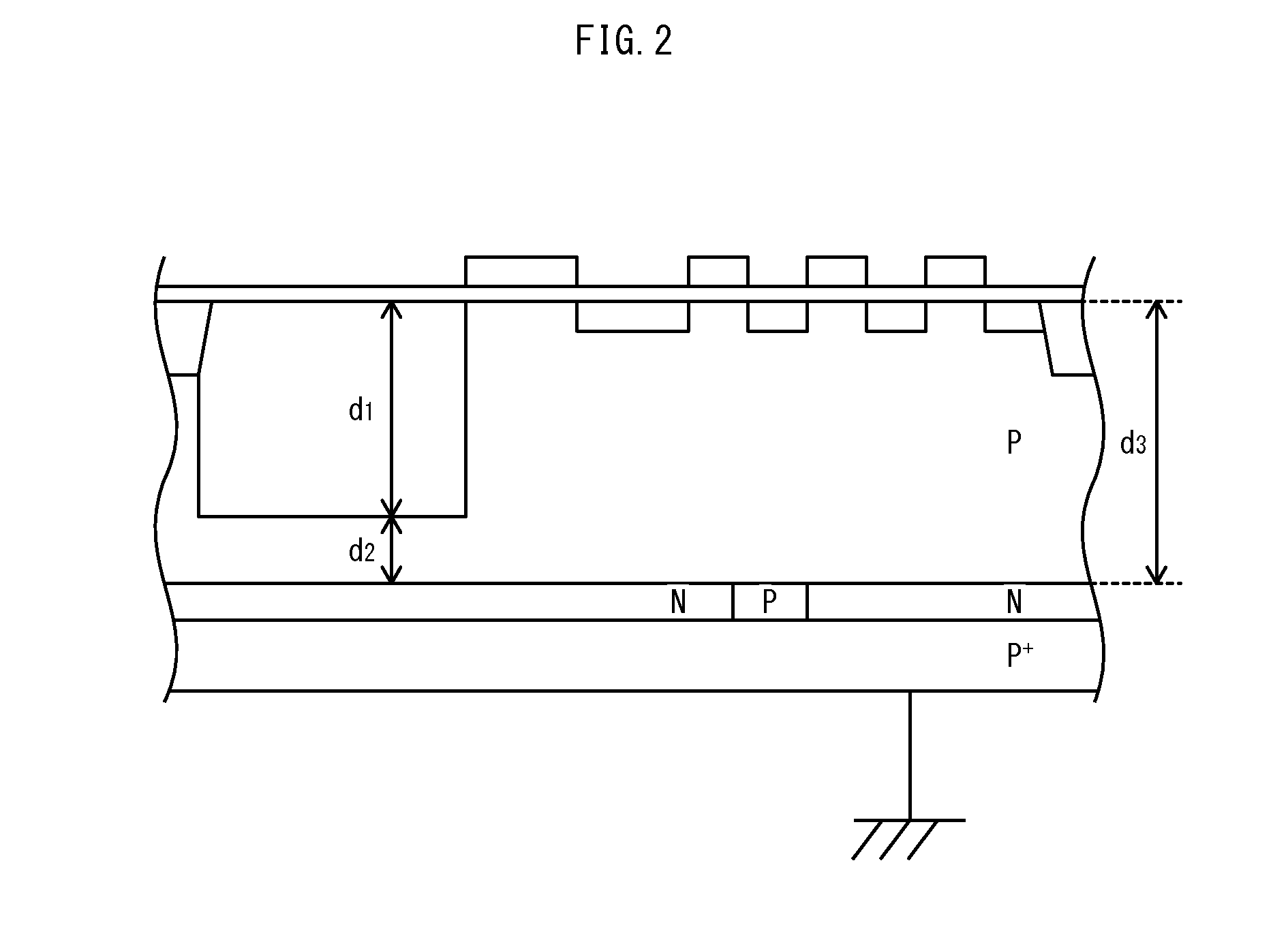Solid-state imaging device
a solid-state imaging and imaging device technology, applied in the direction of diodes, semiconductor devices, radiation control devices, etc., can solve problems such as dark current, and achieve the effect of stabilizing the stable electric potential of the well region
- Summary
- Abstract
- Description
- Claims
- Application Information
AI Technical Summary
Benefits of technology
Problems solved by technology
Method used
Image
Examples
embodiment 1
1. Structure of Solid-State Imaging Device 100
[0031]FIG. 1A is a cross-sectional view of a solid-state imaging device 100 pertaining to Embodiment 1 of the present disclosure, and FIG. 1B is a layout diagram showing a modification example of the positional relationship between transistors and a connection region. Note that the cross section along the line A-A shown in the plan view of the solid-state imaging device 100 shown in FIG. 1B corresponds to FIG. 1A.
[0032]As shown in FIG. 1A, the solid-state imaging device 100 includes: a P+-type (first conductivity type with a high concentration of impurities) silicon substrate 10; an N-type (second conductivity type) dark-current drain region 20 formed on the silicon substrate 10; a P-type (first conductivity type) connection region 30 formed on the region within the silicon substrate 10 where the dark-current drain region 20 are not formed; a P-type (first conductivity type) well region 40 formed over the dark-current drain region 20 and...
embodiment 2
1. Structure of Solid-State Imaging Device 200
[0054]FIG. 5A is a cross-sectional view of a solid-state imaging device 200 pertaining to Embodiment 2 of the present disclosure, and FIG. 5B is a layout diagram showing the positional relationship between the transistors and the connection region. The solid-state imaging device 200 has the same elements as the solid-state imaging device 100 except for the elements described below, and explanation of the same elements is therefore omitted.
[0055]As shown in FIG. 5A, the solid-state imaging device 200 includes a dark-current drain region 220 composed of a first dark-current drain region 222 and a second dark-current drain region 224. The section corresponding in position to the photodiode 50 includes the first dark-current drain region 222, but does not include the second dark-current drain region 224. The top surface of the first dark-current drain region 222 is at a greater depth than the bottom surface of the photodiode 50, and the top ...
embodiment 3
1. Structure of Solid-State Imaging Device 300
[0061]FIG. 7A is a cross-sectional view of a solid-state imaging device 300 pertaining to Embodiment 3 of the present disclosure, and FIG. 7B is a layout diagram showing the positional relationship between transistors and a connection region. The solid-state imaging device 300 has the same elements as the solid-state imaging device 100 except for the elements described below, and explanation of the same elements is therefore omitted.
[0062]As shown in FIG. 7A, the solid-state imaging device 300 includes: an insulating film 90 which is formed to cover the gate oxide film 60 and in which a connection layer 92 is embedded, the connection layer being composed of a contact region, a plurality of metal wiring lines, and a via; a lower electrode 94 formed on the insulating film 90, a photoelectric conversion film 96 spreading to cover the lower electrode 94; and an upper electrode 98 made of light-transmissive conductive material and covering th...
PUM
| Property | Measurement | Unit |
|---|---|---|
| distance | aaaaa | aaaaa |
| distance | aaaaa | aaaaa |
| electric potential | aaaaa | aaaaa |
Abstract
Description
Claims
Application Information
 Login to View More
Login to View More - R&D
- Intellectual Property
- Life Sciences
- Materials
- Tech Scout
- Unparalleled Data Quality
- Higher Quality Content
- 60% Fewer Hallucinations
Browse by: Latest US Patents, China's latest patents, Technical Efficacy Thesaurus, Application Domain, Technology Topic, Popular Technical Reports.
© 2025 PatSnap. All rights reserved.Legal|Privacy policy|Modern Slavery Act Transparency Statement|Sitemap|About US| Contact US: help@patsnap.com



